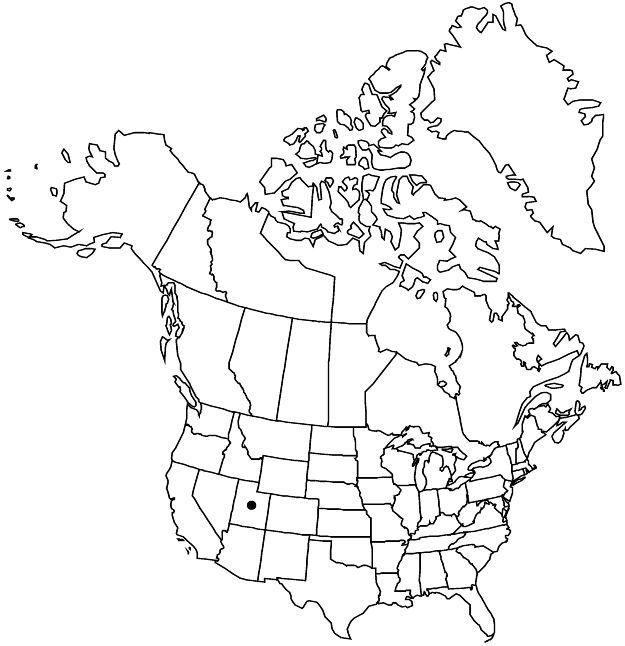Viola frank-smithii
Brittonia 44: 303, fig. 1E – H. 1992.
Plants perennial, caulescent, not stoloniferous, 1.5–12.5 cm. Stems 1–4, decumbent or ascending to erect, glabrous, on caudex from fleshy rhizome. Leaves basal and cauline; basal: 2–3; stipules lanceolate, margins fimbriate, apex acute; petiole 1.5–6 (–14) cm, glabrous; blade broadly ovate to deltate, 1.3–2.9 (–4.1) × 1.3–2.9 cm, base cordate to truncate, margins crenate, eciliate, apex obtuse to rounded, surfaces glabrous; cauline similar to basal except: petiole 1.3–6.5 cm; blade 1.1–2.2 × 0.7–1.6 cm. Peduncles 2.5–7 (–11.2) cm, glabrous. Flowers: sepals lanceolate to linearlanceolate, margins eciliate, auricles 0.5–1.5 mm; all petals usually pale-purple, sometimes almost white adaxially, lateral 2 and lowest purple-veined, lateral and upper 2 violet abaxially, white basally, lateral 2 bearded, lowest 10–16 (–18) mm, spur greenish to pale lime green, gibbous, 1.6–3 mm; style head bearded; cleistogamous flowers unknown. Capsules ovoid, 3–7 mm, glabrous. Seeds pale-yellow, 2.4–2.8 mm.
Phenology: Flowering May–Jul.
Habitat: Cracks, crevices, and narrow ledges of vertical limestone and dolomite rock faces, humid, shady places
Elevation: 1600–2100 m
Discussion
Of conservation concern.
Viola frank-smithii is endemic to Logan Canyon, Cache County, Utah. N. H. Holmgren (2005d) wrote that it likely has its ancestral ties with V. adunca.
Selected References
None.
Lower Taxa
"thick" is not a number. "narrow" is not a number.
